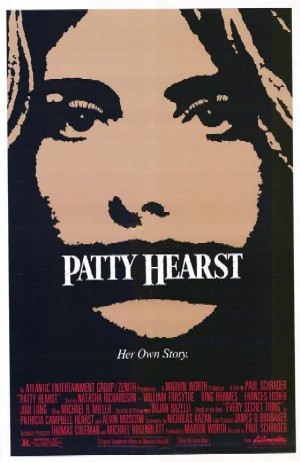“Death to the fascist insect that preys upon the life of the people!”
— Patty “Tania” Hearst
2004’s Guerrilla is not the first movie that I’ve reviewed about the kidnapping of heiress Patty Hearst. Previously, I took a look at Abduction, a grindhouse film that was released while Hearst was still missing, and 1988’s Patty Hearst, which was based on Hearst’s own book about her ordeal. However, Guerrilla is different from those two films in that it’s a documentary and it features interviews with people who actually knew Patty and her kidnappers.
It’s a strange and complicated story, the type that you would probably be dismissed as implausible if not for the fact that it actually happened. In 1973, Oakland school superintendent Marcus Foster was gunned down in a parking lot. Because Foster was the first black man to held the position of superintendent, it was originally assumed that he had been gunned down by a racist paramilitary group. However, a neo-Marxist group known as the Symbionese Liberation Army (SLA) soon took responsibility for the murder, claiming that Foster had been tried in a people’s court and sentenced to death for his crimes. (Foster’s “crime” was apparently trying to introduce ID cards in Oakland schools.)
Who were the SLA? They were a small group of self-styled revolutionaries. Though their leader was a black, escaped convict named Donald DeFreeze, the other members of the SLA were white and largely middle class. They enjoyed sending out portentous political announcements and they went out of their way to try to portray themselves as being a highly disciplined and regimented military organization. Donald DeFreeze changed his name to “Field Marshal Cinque.” According to the interviews in Guerrilla, most of their fellow radicals viewed the SLA as being a joke. (One contemporary expresses his disappointment in meeting the SLA and discovering that they were all very boring and middle class.) No one could understand the logic behind murdering Foster, who was viewed as being a progressive educator.
If not for what happened in the months after Foster’s murder, the SLA probably would have faded into the same obscurity that has swallowed up so many activist groups. After two members of the group were arrested, the SLA retaliated by kidnapping Patty Hearst.
At the time that she was abducted, Patty Hearst was a nineteen year-old student at Berkeley. She was also the granddaughter of William Randolph Hearst, the publishing magnate whose life famously inspired the film Citizen Kane. With the entire world now watching, the SLA announced that Patty would be executed unless the Hearst family arranged for every poor person in California to receive $70 worth of food. As is portrayed in cringe-inducing detail in the documentary, the Hearst family actually attempted to meet the SLA’s demands, just to watch the food distribution program descend into chaos. As for the SLA, they were not impressed by the Hearst family’s effort. Even more tellingly, Patty was not impressed. In a recording sent to the press, Patty complained that her family hadn’t made enough of an effort and assured everyone that the SLA was treating her in accordance to international law.
Shortly afterwards, the SLA released another recording. In this recording, Patty announced that she had been given the option of either returning to her family or joining the SLA. She had decided to join the SLA and take the new name of Tania. Soon, Patty Hearst was robbing banks and declaring “death to the fascist insect.”
Was Patty sincere in her conversion or was she brainwashed? That’s the question that Guerrilla explores, while leaving it to the audience to decide for themselves what was actually going on in Patty’s mind. Though Patty is not interviewed in the film, we do get to hear the recordings that she made during her time with the SLA. We listen as she goes from being a sacred abductee to a self-declared “urban guerrilla.” Listening to her dull, flat voice, you get the feeling that she didn’t have much of an individual identity before she was kidnapped and she had even less of one after she converts to the SLA cause. When she talks about how much she loves the other members of the SLA, she sounds like an actress giving a bad audition. Before she was kidnapped, she was a Hearst. After she was kidnapped, she was a revolutionary. At no point do you get the feeling that she was ever just Patty.
It’s an interesting story and Guerrilla is a fascinating documentary, one that explores how idealism can sometimes be just as dangerous as cynicism. It’s also a film that explores how the kidnapping of an heiress received more attention than the murder of a teacher. It’s interesting to note that, while the other members of the SLA eventually ended up either dead or in prison, Patty Hearst ended up getting a full pardon from Bill Clinton. It’s hard not to feel that the story would have been much different if the SLA had kidnapped Jane Smith instead of Patty Hearst.



